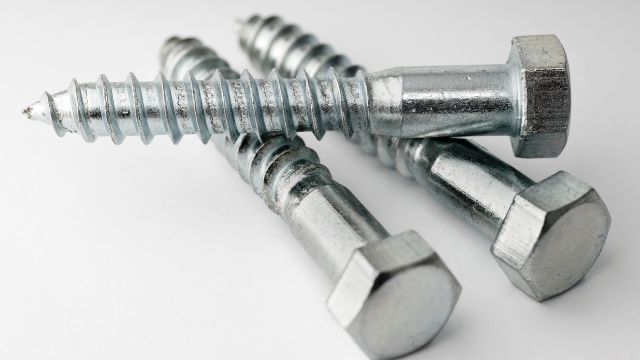During construction and woodwork, you use different types of screws. Each of these screws may serve a different purpose and should not be used interchangeably. Choosing the right kind of tools and material is vital, or else you may compromise the structural strength. Today, we are going to talk about lag screws and wood screws, and we will explain to you the difference between the two.
What is Lag Screw?
Lag screws, also known as lag bolts, are heavy-duty fasteners designed for use with wood. The lag screw has a hexagonal head that can be tightened with the help of a wrench, and it also has excellent holding power. The lag screw bites into the material since it has coarse yet sharp teeth. In addition to this, you can create a strong joint using Lag Screws. They are preferred for securing large beams or attaching heavy items to the wood.
Advantages of Lag Screw
- Load Bearing Capacity – The load-bearing capacity of the lag screw is pretty high. You can choose the higher diameter of the lag screw if the load is high. The nut in the lag screw works as a counter when it comes to supporting the weight of the beams.
- Structural Application – When using a lag screw, you can be assured of structural strength. There is no play in the beams if the lag screw is used correctly. This may not be true for the wood screw since there is a lack of nuts in wood screws.
- Resistant to Rust – Lag screws are galvanized and coated, making them rust-resistant. So, even if moisture seeps into the area, the lag screw will not fail, keeping you safe.
- Long Lasting – The lag screw can withstand high tension and stress levels. In such a case, they are very slow with the wear & tear. You can use chemical compounds to make the lag screw last even longer.
- Reduces the Risk – A lag screw is used along with the nut, reducing the risk of the screw coming out by itself. The nut pulls and holds the screw with the appropriate strength, reducing the risk of critical failure.
Disadvantages of Lag Screw
- Difficult to Work – Remember that a lag screw comes with a nut. In such a case, you would need space to work on both sides of the beam. If you don’t have enough space or if the space is narrow, then it won’t be easy to work with the tools.
- Drilling Required – If you use a lag screw, you would need to make a hole first. You cannot use a lag screw without drilling since the threads are not self-threading type. So, there is an extra amount of work when you have to use a lag screw.
What is Wood Screw?
A wood screw is mainly used to fasten wood to food. It is primarily used for interior applications when dealing with softwood or hardwood. In addition, the wood screws are used where you need precession and higher control. Wood screws have a screw head, and the thread can drive them into the wood with a little pressure. You can use a manual or an electric screwdriver with the wood screw.
Advantages of Wood Screw
- No Drilling Required – Unlike the lag screw, you do not have to drill a hole using a wood screw. The wood screws are self-threading, so it is always better to use wood screws on small joints where you don’t need extra strong hold. Even manual screwdrivers can be used along with the wood screws.
- Permanent Bond – The thread of the wood screw bites into the wood and creates a bond together. If you use some glue while using the wood screw, the bond will be permanent, and the screw will be able to bind the wood with a permanent bond.
- Removable – Another nice thing about the wood screw is that it can easily be removed. This is especially helpful when you need to dismantle things. A manual or an automatic screwdriver can remove the wood screw. You can even remove the wood screw if you have made any mistake.
- Inexpensive – Wood screws are also inexpensive. They are very effective, and they can be used for multiple applications. Wood screws are also available in brass, which can repel rust from forming.
- Easy to Work With – Wood screws offer high accuracy, and the credit goes to the sharp tip. They can penetrate the wood easily, and it is faster to use wood screws when compared with the nail. These things make it very easy to work with the wood screw.
Disadvantages of Wood Screw
- Relatively Less Load Bearing – When we compare the wood screw with the lag screw, you must note that the load-bearing capacity of the wood screw is relatively less. Hence it should only be used on small joints.
- Thread Wear – With time, wood screw experience thread wear, which can compromise the joints over extended years. To avoid this situation, using a wood screw with glue is recommended.
Final Take
By going through the differences between the lag screw and the wood screw, you would have understood both usage and advantages. Both the screws are different, and as mentioned earlier, you must choose the screw according to the use case. If you use a wood screw instead of a lag screw, your structural strength may be compromised. We hope all these details helped you answer the questions that you had. If you still need more information, please feel free to contact us using the comment section.


